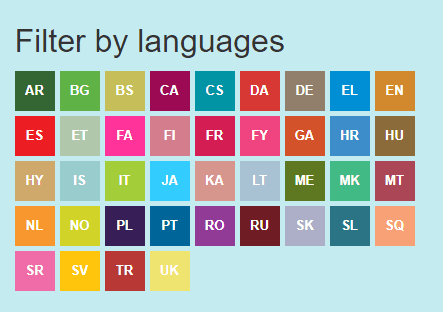The development strand
It is important to differentiate between project outputs - the new resources the team members commit to producing – and project activities, such as team meetings, workshops and network meetings.
As far as project outputs are concerned, team members commit to producing these in at least two languages, one of which must be either English or French. Many project teams choose both English AND French, but others opt for different combinations, such as English and German, English and International Sign or, where feasible, English, French and German. These choices will depend on the linguistic expertise of the individual team members and on the intended project target group. In addition, project team members often present the intended project output in their own language on the project website, thereby reaching out to a wider audience. (see Mediation in teaching, learning and assessment example) They might also choose to organise surveys as part of the development process and to offer these in several languages.
Once a project is completed and the outputs have been published, these are often so popular that others within the languages community offer to translate them into additional languages. Just take a look at our resource database – the number of language options below should give you an idea of just how many resources exist in languages other than English and French!

On a formal level, project activities will operate in the same language/s as the project itself; informally, however, every opportunity is taken to encourage plurilingualism, for example when experts have another language in common or can use inter-comprehension strategies to communicate across languages within the same family. At larger events, the organising team might choose to create language-specific sub-groups to work on a particular aspect of the project. This is why we ask network and workshop participants to provide us with their complete linguistic profile on the application form. The same principles apply to ECML think tanks.